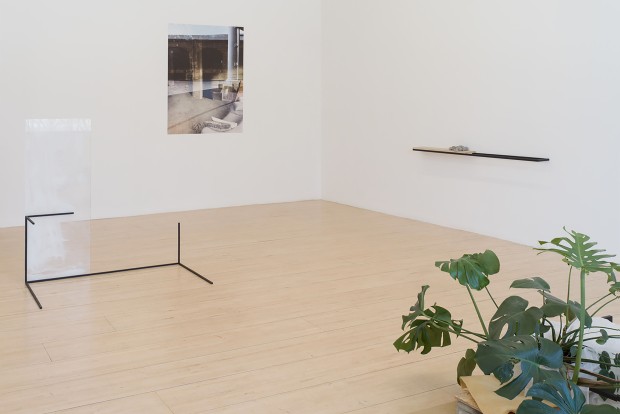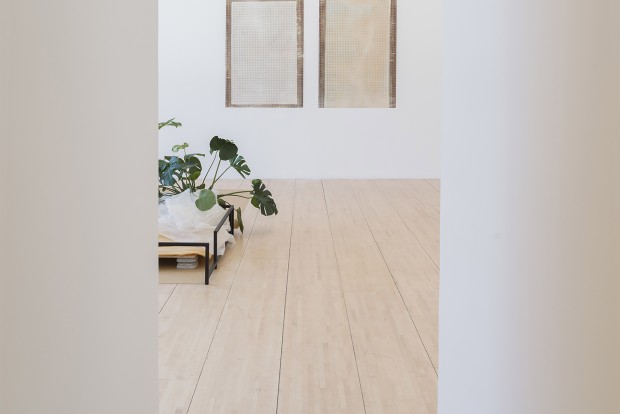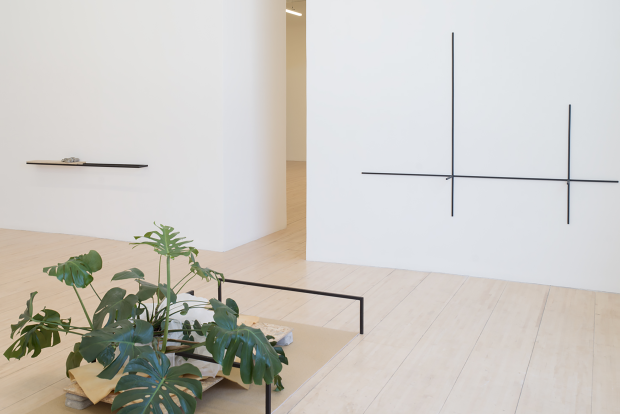
Credits: Valérie Kolakis.
The continuous movement between destinations will become a room
Valérie Kolakis
- Exhibition
Exhibition resulting from the program Autorésidences
Autorésidences is a remote residency program created by the AXENÉO7 artist-run centre in the exceptional context of the COVID-19 pandemic to continue to support research and development of current art practices.
Opening night on Wednesday, March 15, 2023 from 7PM to 11PM.
Music by DJ Rodrigo Medrano
Free entrance
Cash bar — Card only
Free parking
The continuous movement between destinations will become a room
[…] environments are never complete but are continually under construction. — Tim Ingold
Home is the domestic space, it is the home-base, the space we build physically and mentally in which to dwell and to return to. Home is the reference point from which what is outside is understood and framed. External environments are incomplete and provisional. Socially isolated outside of our home, we are fragmented, clumsy, referring back to domesticity to find our footing in the public space. Homi K. Bhabha referred to this state of displacement, where one is neither accommodated nor assimilated within public space as one of being “unhomed”.
The continuous movement between destinations will become a room is an exhibition that includes simple geometric elements recalling the architectonics of domestic space. Linear steel constructions, three-dimensional drawings, outline the shapes occupied by shelves, armoires, beds, and window frames. These refer to the absence of these furnishings, to the displacement and disappearance of the domestic in the public shared space of the gallery. These steel pieces are repurposed to support found and deconstructed elements that recall domestic settings. Carpets, houseplants, picture frames are arranged in clusters as makeshift memorials. Other elements are strewn through the gallery space, remnants of domesticity transformed into abstract sculptural forms. Domestic space is characterized as being inscribed with the past and present lives of its inhabitants. It effaces public space as it folds into itself and repels what is beyond it.
The materiality of Valérie Kolakis’s artworks revolve around these objects of domesticity, their use value as tokens of identities and pasts. The displacement in the public space is one of being uprooted, being unfamiliar with the codes of behaviour operating beyond the domestic space, outside of the home. These codes are materialized in public architecture and in the regimented ornamentation of the city. Kolakis’s structures and elements borrow from architectural plans and sketches. Unlike these plans which propose material forms in space, what is yet to be built, Kolakis’s works point to the imminent collapse of an architectural order and point to the disharmony between public space and personal experience.
The exhibition is configured as stations, agglomerations of displaced architectural elements within the physical space of the gallery. This configuration challenges the reception of the gallery’s interior and the movement of the spectators through this public space. The agglomerations assemble objects, knickknacks, and souvenirs, that define and characterise domestic space. These at once familiar and unfamiliar objects evoke unknown inhabitants now absent from that space.
In the exhibition, we find repurposed remnants and found objects from the home; blankets, picture frames, curtains and rugs suggest a displaced domesticity, a home-base exploded and exposed to the public. The exhibition oscillates at the intersection of personal identity and the architecture of public space. The domestic interior that is normally invisible, hidden from public view, becomes visible and on display. The displacement of the home in Kolakis’s work evoke Freud’s uncanny (unheimlich) where the familiarity of the home flips from a space of inclusion to one of exclusion transforming ‘being at home’ into an elsewhere in public space.
Architectural design is first and foremost a cognitive process, homes are thought before they are built. Our need for dwelling, our capacity to conceive and imagine a home is a pre-condition for architecture. We describe our surroundings in architectural terms, we identify the elements that make up a home, the doors, windows, walls, and ceilings, but most of us are not architects. Through dwelling in it, we build the mental space that surrounds us.
The home is produced through a process of what Tim Ingold refers to as “co-option and construction.” We build our domestic space with objects that are useful and meaningful to us, and we adapt these objects to respond to the mental and physical space of the home and likewise adapt the domestic space to accommodate these objects. Kolakis’s assemblages follow this process as their components are modified and change shape and meaning within the relationships among the different elements and forms of the artwork. The movement is continuous becoming a room, a destination transcending public space with that of the home.
— Paul Landon
Valérie Kolakis lives and works in Montréal (Quebec, Canada).
Kolakis has exhibited in museums and contemporary arts spaces including, the Kunsthaus Baselland (Basel, Switzerland); the Kunsthaus L6 (Freiburg, Germany); the Ke Center for the Contemporary Arts (Shanghai, China); the Zendai Museum of Modern Art (Shanghai, China), and the Musée d’art contemporain de Montréal (Canada). She has also shown in biennales and events including EVA International Biennial of Contemporary Art (Limerick, Ireland); La Triennale québécoise of the Musée d’art contemporain de Montréal (Canada), and Nuit Blanche (Paris, France), and in art galleries including Fold Gallery London, Galerie Antoine Ertaskiran and Galerie Donald Browne (Montréal, Canada).
Kolakis’ artwork is in both private and public collections including, Musée d’art contemporain de Montréal, Musée national des beaux-arts du Québec and Collection Prêt D’Oeuvres d’art du musée national des beaux-arts du Québec (all in Canada).






